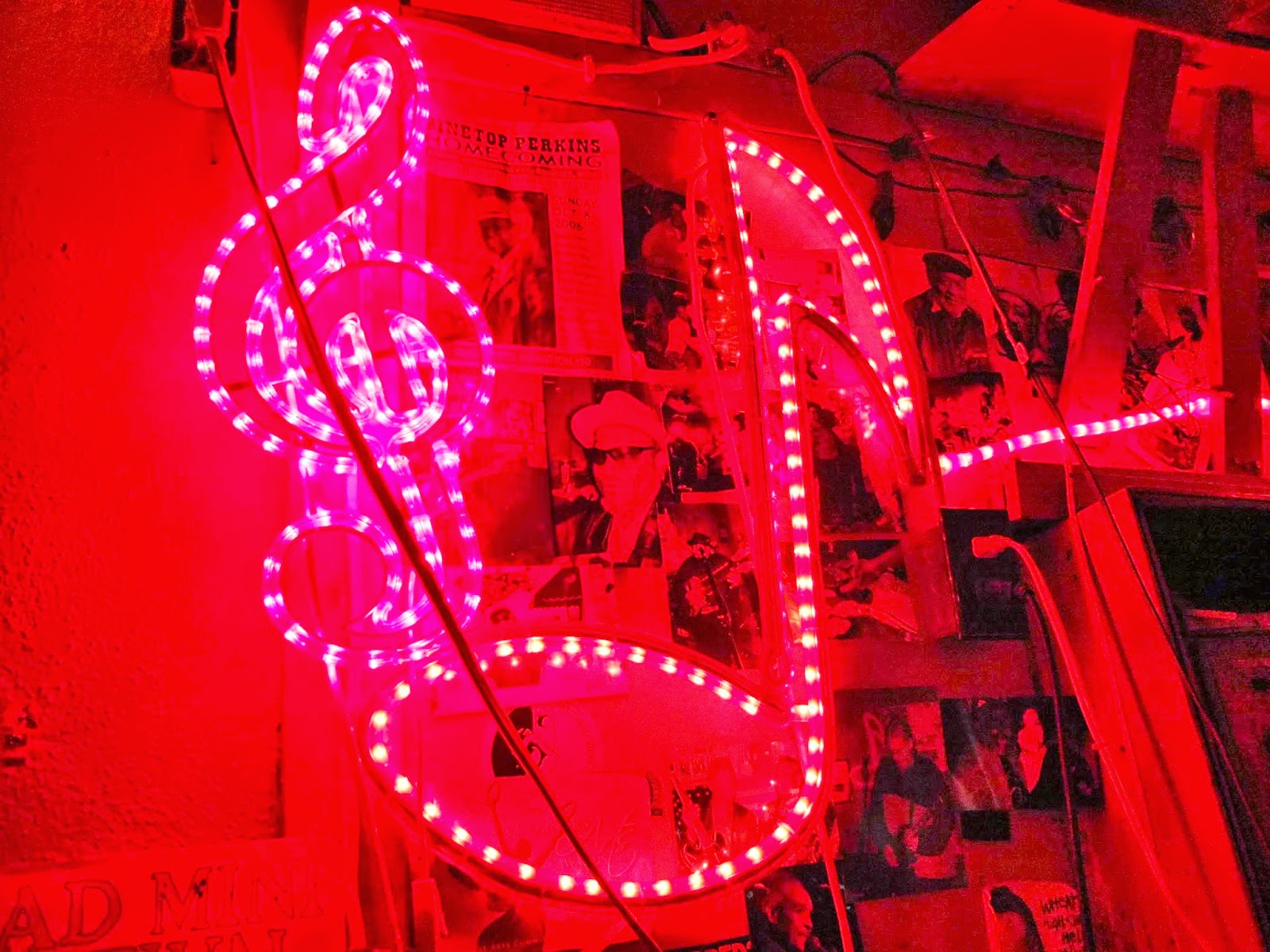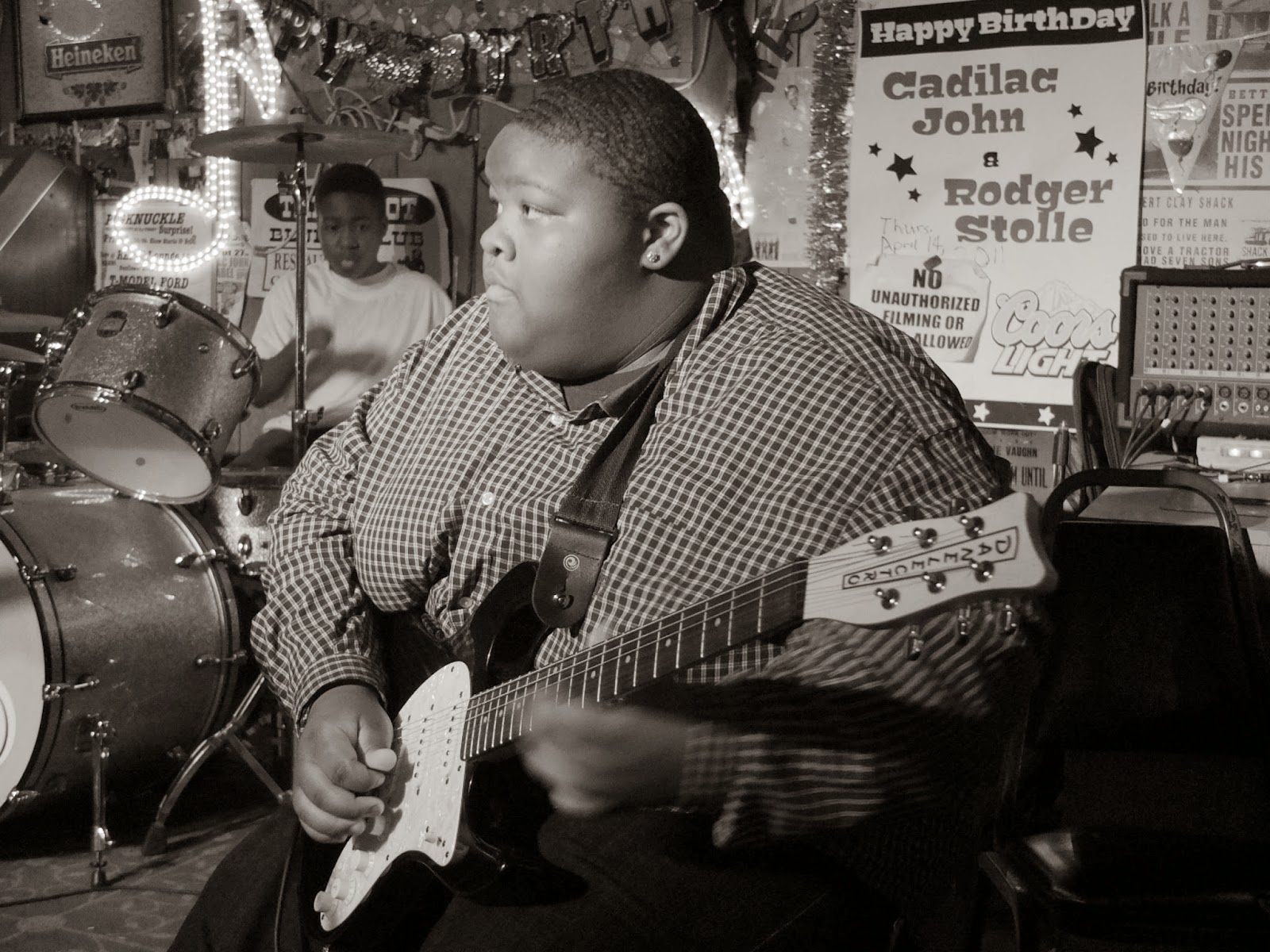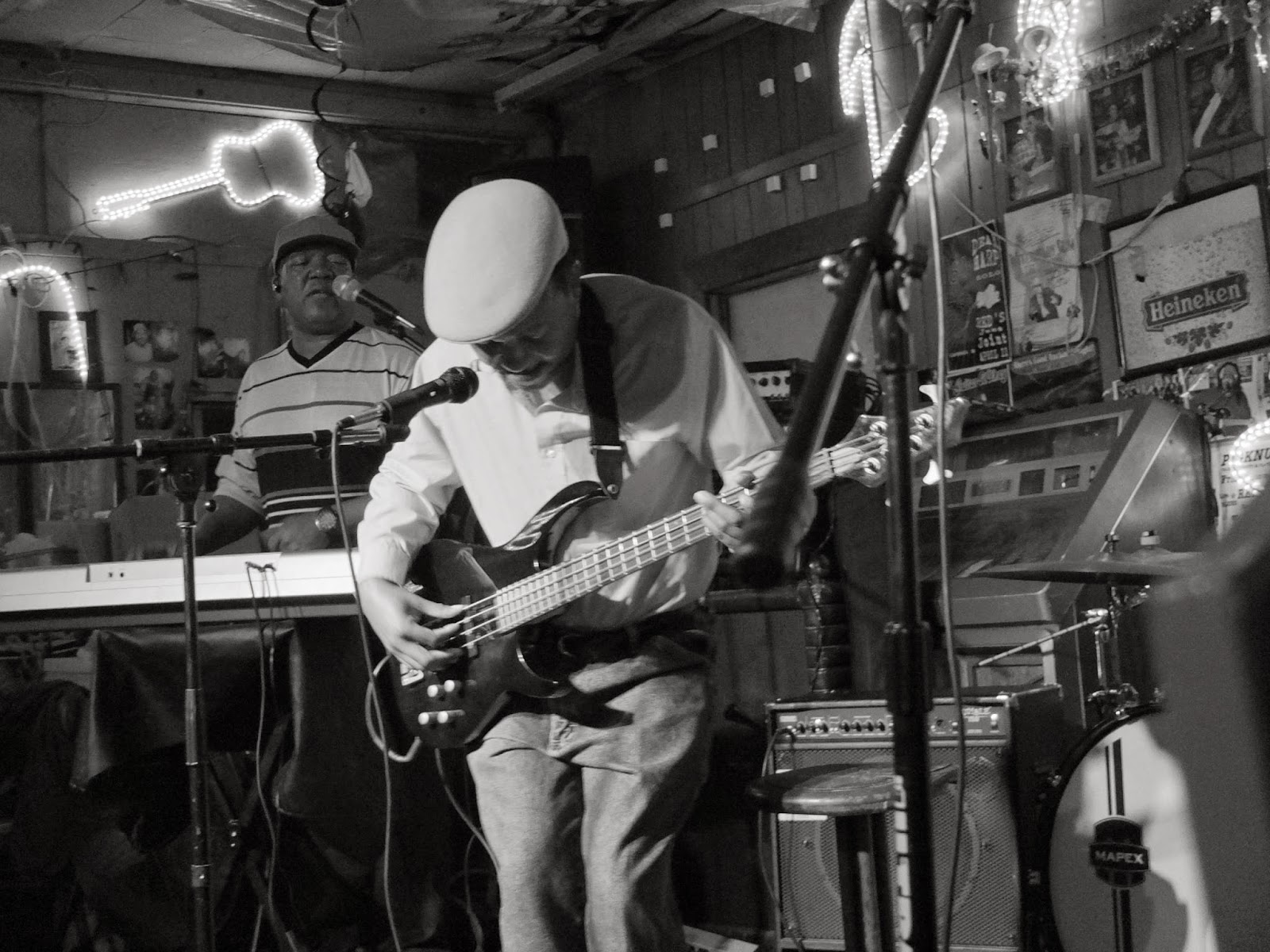Und hier ein paar Grabsteine, die viel über den Verstorbenen aussagen. Ob die auch bei uns möglich sind ? Spongebob? Captain Future? Lemmi und die Schmöker??
Harold "Hardface" Clanton - Tunica
Harold "Hardface" Clanton - Tunica
Long before casinos brought legalized gambling and big-name entertainment to Tunica, African American entrepreneur Harold “Hardface” Clanton (1916-1982) ran a flourishing operation here that offered games of chance, bootleg liquor, and the best in blues music. Nicknamed for the stone face he wore during poker games, Clanton owned several businesses, including a cafe near this site and “The Barn” on Old Mhoon Landing Road, where most of the action took place.
Harold “Hardface” Clanton was a legend not only in Tunica but across the country, in both blues and gambling circles. Though never elected to office, he was called “the black sheriff” of the county and was reputed to be Tunica's “first black millionaire” as well. Recalled with fondness and admiration by blacks and whites alike, Clanton operated in an era when Tunica County steered its own course when it came to gambling and alcohol statutes. Gambling helped fuel the economy, drawing money from the many out-of-town participants and providing employment for locals. Hardface's activities helped pave the way for Tunica County to legalize casino gambling in 1991. It was the first county on the Mississippi River to do so.
Clanton was born into a large farming family on May 29, 1916. He had only a grammar school education, according to his U.S. Army enlistment papers from 1943. However, his term in the military turned out to be both educational and profitable–he came home loaded with cash he had won from servicemen and with enough gaming experience to start a business of his own. He opened Harold's Cafe at 856 Magnolia Street in Tunica and later built “The Barn” four miles west of this site. He also raised cotton and at times ran cafes in West Memphis and on Prichard Road in Tunica. B. B. King, Bobby Bland, Howlin' Wolf, Ike Turner, Albert King, Sonny Boy Williamson No. 2, Robert Nighthawk, Frank Frost, Houston Stackhouse, and many other renowned blues artists provided music for Hardface and his clientele. Many of the local bands Hardface hired were led by drummers: Sam Carr of Lula, James “Peck” Curtis of Helena, and the peg-legged Roosevelt “Barber” Parker of Tunica. Parker and his Silver Kings Band once had a radio show in Memphis on WDIA.
Hardface's reputation reached from Las Vegas to Cicero, Illinois, the Chicago suburb famed for its Mafia connections. According to a local anecdote, one Monday morning he was asked about the stacks of cash he had accrued. He replied, “Oh, some boys down from Cicero thought they knew how to throw the dice.” Dice games brought in the money for him in Tunica, but Clanton loved to play a three-card poker game called kotch or cotch. He traveled often to gamble himself, superstitiously choosing a different car for each road trip to Texas, Louisiana, or Vicksburg. Some say the nickname Hardface came from his famous poker face, while another story has it that during his younger days, he sometimes lived the gambling life 24 hours a day, sleeping with his face against the hard surface of the craps tables. Clanton died on June 4, 1982. So many people turned out to pay their respects that his funeral had to be held at the Rosa Fort High School gymnasium. content © Mississippi Blues Commission
Friars Point
Robert Nighthawk - Friars Point
Robert Nighthawk (1909-1967) was one of the foremost blues guitarists of his era. Although he rarely stayed long in one town, he called Friars Point home at various times from the 1920s to the 1960s. In a 1940 recording, he sang of “going back to Friars Point, down in sweet old Dixie Land.” During Nighthawk’s time, blues musicians (including the legendary Robert Johnson) played at local juke joints and house parties and in front of stores, such as Hirsberg’s at this site.
Robert Nighthawk was one of the Delta’s most famous blues artists during the 1940s and ‘50s, known for his radio broadcasts on KFFA in Helena, Arkansas, and WROX in Clarksdale, as well as for his recordings and his wide-ranging travels. Nighthawk, it seemed, was always in the process of changing his address, his marital status, or his name. Born Robert Lee McCollum on November 30, 1909, in Phillips County, Arkansas, he played harmonica before he learned guitar from Houston Stackhouse on a farm in Murphy Bayou, Mississippi, in 1931. On his first records, including “Prowling Night-Hawk” in 1937, he was billed as Robert Lee McCoy; among several other recording monikers, the most appropriate was Rambling Bob. He lived in Chicago, St. Louis, Memphis, Florida, and elsewhere, in between periodic returns to the Delta.
Nighthawk was famed for his cool, composed vocal style and his influential slide guitar sound, which he achieved by sliding a piece of brass pipe along the guitar frets. His best known records included “Annie Lee Blues,” “Black Angel Blues,” “The Moon is Rising,” and “Crying Won’t Help You.” B.B. King once named Nighthawk as one of his ten favorite guitarists. Nighthawk’s renown has spread internationally since his death in Helena on November 5, 1967. He was elected to the Blues Hall of Fame in 1983, and a powerful album released in 1980, Robert Nighthawk: Live on Maxwell Street 1964, was named one of the ten best rock ‘n’ roll albums of the year by critic Greil Marcus.
Among Nighthawk’s several marriages, at least one was in Friars Point, where he worked on John McKee’s plantation. While most local blues activity was in plantation juke joints or in the New Town area on the southern end of Friars Point, sometimes merchants hired musicians to play inside or in front of their downtown stores to attract potential customers; at other times, performers would just set up outside and play for tips. But, according to drugstore owner Robert Hirsberg, merchants sometimes complained when crowds were so thick that no one could get in–or out of–the stores. Muddy Waters recalled Robert Johnson drawing a huge crowd for a street corner performance in the 1930s, when Friars Point was a bustling center of river commerce and a weekend shopping mecca for residents of the countryside. Johnson also reportedly played at a local barrelhouse called the Blue and White Club, and on a 1937 recording, he sang, “Just come on back to Friars Point, mama, and barrelhouse all night long.” African American performers based in Friars Point who later made records also included the Sons of Wonder gospel group and blues harmonica players Robert Diggs and Blind Mississippi Morris Cummings.
content © Mississippi Blues Commission
TUNICA
Highway 61 North - Tunica
U. S. Highway 61, known as the "blues highway," rivals Route 66 as the most famous road in American music lore. Dozens of blues artists have recorded songs about Highway 61, including Mississippians Sunnyland Slim, James “Son” Thomas, “Honeyboy” Edwards, Big Joe Williams, Joe McCoy, Charlie Musselwhite, Eddie Shaw, Johnny Young, Eddie Burns, and Mississippi Fred McDowell. The original route, now called Old Highway 61, was just west of here.
Travel has been a popular theme in blues lyrics, and highways have symbolized the potential to quickly “pack up and go,” leave troubles behind, or seek out new opportunities elsewhere. As the major route northward out of Mississippi, U. S. Highway 61 has been of particular inspiration to blues artists. The original road began in downtown New Orleans, traveled through Baton Rouge, and ran through Natchez, Vicksburg, Leland, Cleveland, Clarksdale, and Tunica in Mississippi, to Memphis and north to the Canadian border. Mississippi artists who lived near Highway 61 included B. B. King, Robert Johnson, Charley Patton, Son House, Muddy Waters, Howlin' Wolf, Sonny Boy Williamson No. 2 (Rice Miller), Ike Turner, Robert Nighthawk, Sunnyland Slim, Honeyboy Edwards, Sam Cooke, James Cotton, Jimmy Reed, and Junior Parker.
The first song recorded about the road was Roosevelt Sykes’s “Highway 61 Blues,” cut in 1932; at the time Sykes was a resident of St. Louis, the first major city along Highway 61 above the Mason-Dixon line. In 1933 two Memphis bluesmen, Jack Kelly and Will Batts, recorded "Highway No. 61 Blues," and the Tupelo-born Sparks Brothers cut "61 Highway." Other 1930s recordings included "Highway 61," a sermon by Raymond, Mississippi, native “Hallelujah Joe” McCoy; "Highway 61" by Jesse James; and "Highway 61 Blues" by Sampson Pittman, recorded for Alan Lomax of the Library of Congress. In 1947 Gatemouth Moore recorded a jump blues version of “Highway 61 Blues,” and in 1956 pianist Sunnyland Slim (Albert Luandrew) of Vance, Mississippi, recorded “Highway 61.” Over the next decades Highway 61 songs often appeared on albums by James “Son” Thomas of Leland, Honeyboy Edwards, Big Joe Williams, Mississippi Fred McDowell, and other traditional blues veterans.
Although many bluesmen used the lyrics “Highway 61, longest road that I know,” their descriptions of the highway’s route were often misleading. Some suggested that the road started at the Gulf of Mexico (100 miles south of New Orleans) and ran through Atlanta, New York City, or Chicago. Many Mississippians certainly did begin their migrations to Chicago via Highway 61, but most finished their journeys by continuing from St. Louis to the Windy City along the famous Route 66. In 1965 the road gained an even more mythological reputation when Bob Dylan recorded his influential album “Highway 61 Revisited.” Dylan was well versed in the blues, but his inspiration may also have come from the fact that Highway 61 ran through his home state of Minnesota.
content © Mississippi Blues Commission
James Cotton - Tunica
James Cotton, one of the world’s most popular and dynamic blues harmonica players, was born just east of this site on the Bonnie Blue plantation on July 1, 1935. Cotton apprenticed with harmonica master Sonny Boy Williamson No. 2 (Rice Miller) in Helena, Arkansas, and spent twelve years in Muddy Waters’s band in Chicago. In 1966 Cotton left Muddy to start his own band, and later earned the nickname “Mr. Superharp” for his high-energy performances.
James Cotton took to the blues life at an early age. He used his first harmonica, a gift from his mother, to imitate the sounds of trains and cackling hens, when he was five or six years old. But blues music was unwelcome in his parents’ religious household, and Cotton preferred to stay with his bachelor uncle, Wiley Green, who made bootleg whiskey, gambled, and played blues piano. In about 1944 Green introduced Cotton to Sonny Boy Williamson, who was broadcasting the blues over KFFA radio in Helena, Arkansas. Williamson took the youngster in, and Cotton lived with Williamson and his wife Mattie for several years, first in Helena and then in West Memphis.
When Williamson moved from West Memphis, he left his band and his radio show on KWEM with his protege. Cotton found himself unprepared to be a bandleader, however, and ended up working as an ice hauler, short order cook, shoe shine boy, and dump truck driver, although he continued to perform with Howlin’ Wolf, Willie Nix, and others. In 1952 he made his first studio appearance at Sam Phillips’s Memphis Recording Service, playing harmonica on Wolf’s Chess recording “Saddle My Pony.” Phillips called Cotton back into the studio in 1953-54 to cut his first tracks as a singer for Sun Records, including “Straighten Up Baby” and “Cotton Crop Blues.” In 1954 Muddy Waters needed a harmonica player to replace Junior Wells, who had left the band during a Southern tour, and when he got to Memphis, Waters hired Cotton. Cotton moved to Chicago and put in more years with the band than any of Muddy’s other harmonica players, while continuing to record singles and assorted album tracks on his own, including two records made in England in 1961.
Cotton formed the James Cotton Blues Band in 1966. Through friendships with Chicagoans Paul Butterfield and Mike Bloomfield, who were instrumental in bringing the blues to rock audiences of the 1960s, Cotton signed with Butterfield’s manager, Albert Grossman, who also represented Bob Dylan and Janis Joplin. Cotton was subsequently able to work consistently at both rock venues and blues clubs and festivals while recording albums for Verve, Vanguard, and many other labels.
Though throat surgery forced him to curtail his singing in the 1990s, he continued to perform as one of the world’s premier blues harmonicists, heralded for his explosive style and for his mission to carry on the legacy of the blues masters who groomed him. A recipient of several Blues Music Awards, Cotton also won the 1996 Grammy for Best Traditional Blues Album with his CD Deep in the Blues. He was inducted into the Blues Hall of Fame in 2006.
content © Mississippi Blues Commission
Son House - Tunica
Eddie James “Son” House (1902-1988) plumbs the emotional depth of the blues perhaps more than any other Delta blues artist. A preacher at times, a barrelhousing bluesman at others, House was fiercely torn between the sacred teachings of the church and the secular lure of the blues life. House, who lived in the Robinsonville-Lake Cormorant area in the 1930s and early ’40s, was a major influence on both Robert Johnson and Muddy Waters.
Son House is regarded as one of the preeminent blues artists, but during his early career in the Delta, his renown was largely confined to local jukehouse audiences. He later attained international prominence during the 1960s “blues revival” through passionate, trance-like performances that highlighted his aggressive guitar style. He would occasionally rise from his chair to sing spirited a cappella gospel songs.
House was born near Lyon in Coahoma County on March 21, 1902, or by some accounts years earlier. Through his association with Delta blues legend Charley Patton, House first recorded for the Paramount label in 1930, though sales were minimal in the Depression era. Like other Robinsonville-area blues artists, including Robert Johnson, Howlin’ Wolf, and Willie Brown, House performed mostly at weekend suppers and dances held at sharecroppers’ houses. Tunica County locals have recalled House living and working on the Harbert, Tate, and Cox plantations, though he preferred to sing or preach. When the spirit called, he would preach at various churches, only to resume his nightlife as a bluesman.
House was a tractor driver on the R. E. Neunlist plantation in 1941 when he was recorded for a Fisk University-Library of Congress study led by Alan Lomax and John Work III. On September 3, they recorded House, Willie Brown, Fiddlin’ Joe Martin, and Leroy Williams at Clack Store, a commissary and train station that stood at this site. (A chugging locomotive can be heard on the recordings.) Despite problems with local authorities, Lomax later recalled, “Of all my times with the blues, this was the best one.” A second Library of Congress session in Robinsonville in 1942 would be House’s last recording in Mississippi.
In 1964 a group of blues aficionados, including Dick Waterman, drove to Robinsonville to look for House, only to learn he had long retired from music and had moved in 1943 to Rochester, New York. His subsequent “rediscovery” was reported in Newsweek, and Waterman would manage House’s comeback career, often booking him as the closing act at festivals. The most notable of the albums House recorded was the 1965 Columbia LP Father of Folk Blues. House performed little after the early ‘70s, and from 1976 until his death on October 19, 1988, he lived in Detroit with his wife Evie, whom he had married in Robinsonville in 1934. He is buried in Detroit.
content © Mississippi Blues Commission
RED`s LOUNGE - Clarksdale
Lecker Essen! Downtown Clarksdale








































































hanya di www.bolavita.net kamu dapatkan
AntwortenLöschenmau yang asik ? adu ayam
AntwortenLöschenJenis – jenis Warna Bulu Ayam Bangkok
AntwortenLöschenTips Untuk Memulai Bisnis Ayam Bangkok